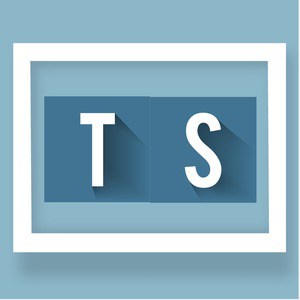Terry Sadowski, an expert in both consumer products and technology, shares invaluable advice on leveraging core skills and overcoming skill gaps when transitioning as a product manager between consumer products and technology.
The product manager career path isn’t a straight line, and I think that’s what makes the work so interesting. Professionals in this field have many different backgrounds, and because of this, they bring insights, strengths and experiences that can at times give them a special edge over the competition.
I recently spent some time thinking about my career path, specifically, the transition from an executive in consumer-packaged goods (CPG) to an executive in technology. After some contemplation, I came to some conclusions about what skills transferred and some of my early skill gaps.
For readers looking to make a similar leap, maybe my journey can shed some light on what you can expect in the next phase of your product manager career.
Here are the three most valuable skills that I was able to transfer from CPG to technology:
Skill #1: A Deep Understanding of Product Positioning
From the moment I stepped in the door at my first job after college at Quaker Oats, I was immersed in training that emphasized the importance of positioning.
I vividly remember product positioning being the subject of many emails, meetings and initiatives. The reason was that, at the end of the day, mastery of this concept is a mandatory ticket that must be punched for success and advancement in CPG careers.
As a CPG product manager, I was expected to have exceptional insight into the various segments of the target market, the priority of their needs and problems and what differentiated the brand from the competition. CPG companies often organize around stand-alone brands (e.g. General Mills owns Cheerios, Chex, Haagen-Dazs, Green Giant, Betty Crocker, Totinos, Yoplait, etc.) and product managers are expected to manage, nurture, and update their product’s positioning regularly.
However, most technology companies are organized differently than CPG firms and individual products typically fall under the master brand of the company itself. The master brand is generally managed closely by corporate marketing. Therefore, a product manager for any specific technology product often has little influence on the direction of the master brand and thus does not spend much time thinking about it, let alone managing it.
That said, my understanding of the power of product positioning served me extremely well during my technology career.
My training taught me to begin with an understanding of the target market’s problems and then how to connect my product to the solutions that they want and need. This starting point led me to better-performing products that resonated with the market. In contrast, some tech businesses can be focused on their features and lose sight of the importance of delivering real solutions that address real user problems.
Skill #2: Knowing the Components of High Quality Design
A product manager at a CPG company is expected to have an intimate understanding of how the target market interacts with the product holistically. First, one must understand product package engineering, with an eye towards optimizing manufacturing and shipping and logistical efficiencies. This involves a lot of “behind-the-scenes” activity, such as carton construction, corrugate integrity, pallet configuration, cubic displacement, recyclability and more.
One must also have to understand what happens in the store, including how graphical design can make the product “pop” off the shelf, and take into consideration how the product is stocked and restocked. After purchase, the CPG product manager needs to examine the customer experience of transportation, usage, storage, and disposal.
All of this is done within the context of cost because the packaging is often the most expensive part of the product.
Think about the evolution and proliferation of laundry detergent delivery from boxes of white powder to bottled liquid to smaller boxes of speckled powder to dissolvable pods, and finally, to dissolvable pods stored in child-proof containers. All of these changes were driven by consumer product managers.
On the other hand, when I started in technology, there was almost no emphasis on the user experience. Hardware was packaged in ugly corrugated boxes with arcane installation manuals and software was delivered on floppy disks.
This has evolved significantly since then and the “out of the box experience” and user design have emerged as major drivers of technology product preference.
Apple perhaps was the catalyst for the industry to pay attention to these important aspects, but my training in consumer products was always helpful to me as I worked on a variety of technological products. Now, as design has come into vogue in technology, I find that much of my training early in my career is quite relevant once again.
Skill #3: Adept at Marketing and Promotion
Consumer product managers spend most of their working hours developing ways to drive demand. They work in an ultra-competitive market, and the battle is fought every minute of every day in the store aisle.
The product manager’s toolkit includes advertising, promotions, in-store displays, coupons, contests and all manner of strategies and tactics delivered via broadcast, print and social media.
Product budgets are generally healthy because it’s the cost of entry for these markets, and there is a tremendous amount of scrutiny and measurement with a variety of metrics and KPIs and dashboards. Additionally, there is quite a bit of market research conducted to determine optimal performance.
In technology firms, the product manager is not directly responsible for as much demand generation. Instead, they are sometimes subordinate to a centralized marketing function or perhaps a peer product marketing manager. This structure requires much more collaboration.
Fortunately, my consumer product training enabled me to not only hold my own with technology marketing teams but often lead strategic and tactical thinking. Also, while the metrics in technology marketing have improved dramatically, they were fairly deficient not that long ago and my push for disciplined measurements has served me well.
While positioning, package design and marketing and promotion were three skills that offered massive value during my transition from consumer products to technology, there was one big hurdle: the technology itself.
Skill Gap: Technological Acumen
Armed with a liberal arts degree and a consumer product background, I was far behind the curve when it came to my technological expertise. While I was considered somewhat of a tech geek amongst my CPG peers, I was no match for my new colleagues who perhaps had an engineering degree and began their career in technology.
Learning the nuts and bolts of the various aspects of hardware and software technology was a significant challenge.
I dedicated a significant amount of time to learning all that I could through research and through meeting with as many engineers as I could. However, my naivete has not been a complete liability.
Since I would often not understand or appreciate the elegance of a tech product, I would ask questions like:
- What problem does this solve for the customer?
- Why does the customer care?”
If the answers to those questions were satisfactory, I would move onto:
- How does this technology differ from what’s out there?
- How is our solution better?
- Will the customer know and appreciate that ours is better?
These questions were sometimes met with a “harrumph” from engineering and development and for years I felt that I was asking remedial questions. Fortunately, I persisted and after a while began to appreciate that I was actually asking them important questions and that the “harrumphing” was often the result of them not having good answers.
Technology should never be the end unto itself. If the technological solution is not solving a problem that the customer wants to pay to have solved, then it’s arguably not a solution at all.
If I Had a Time Machine…
If I had access to a time machine, here’s the advice I’d give to myself as vice president of product management and marketing in CPG moving into a vice president of product management and marketing in technology. Well, besides the advice to buy Apple, Amazon, Microsoft, and Tesla stock.
I would have advised myself to hire, join, or replicate the young Pragmatic Institute which had started just prior to my transition. After transitioning to technology companies, I quickly learned that my new team was lacking in a lot of the basic product management skills that I took for granted in the consumer product space. Left to my own devices, I started training them.
One topic led to another and another. Informal coffee and beer chats led to emails that led to PowerPoint presentations. One presentation led to more and before long, I had a curriculum of “classes” that I taught to my student employees. After I was doing my own DIY training for about five years, a colleague turned me onto Pragmatic Institute (known as Pragmatic Marketing at the time) and in 2002, I took my first course.
I’ve been an advocate ever since and have implemented the Pragmatic method multiple times as a leader and advocated it as a consultant to countless firms. Had I known then what I know now, I would have poured my effort into investing in the industry standard that the Pragmatic Institute has become.
Author
-

Terry Sadowski, a professional with 40 years of expertise in Product Management, Sales, Marketing, and General Management, has contributed significantly to renowned companies like Quaker Oats, BellSouth, and Dell. As a multifaceted leader, his experience spans various industries, making him a valuable asset. For questions or inquiries, please contact [email protected].
View all posts








